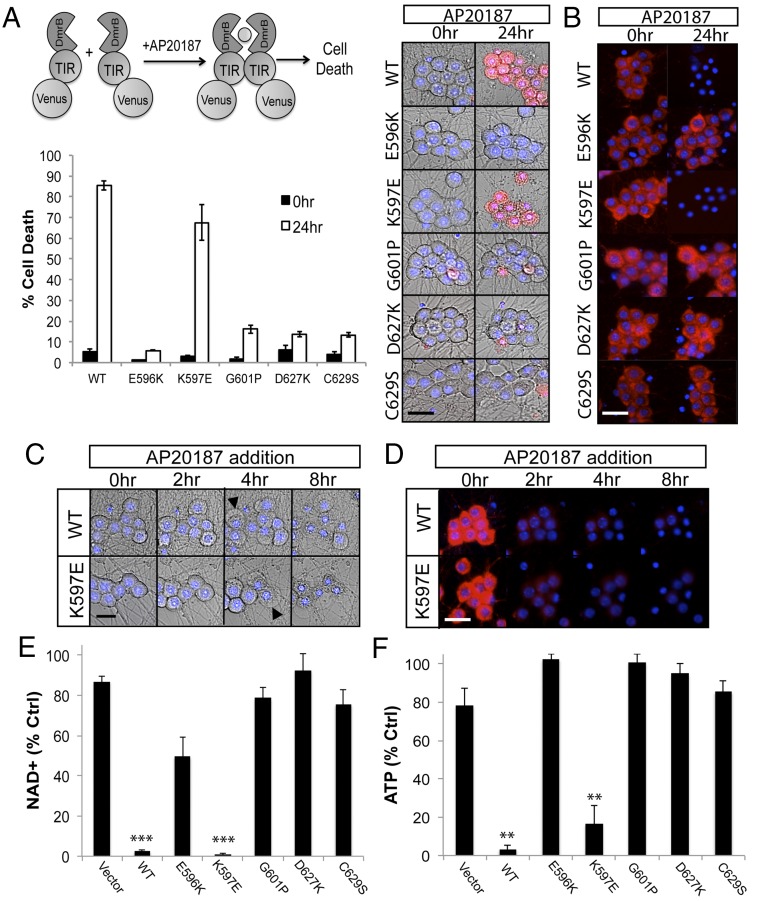Fig. 3.
Mutagenesis of TIR motifs abrogates NAD+ loss upon TIR dimerization. (A) Point mutations were made in homodimerizable (DmrB) TIR, wherein AP20187 induces dimerization and neuronal death. Nonfunctional point mutations in the BB loop and SS loop prevent DmrB-TIR–dependent death 24 h after AP20187 addition. Images of ethidium homodimer-labeled DRG neurons (Right) and quantification (Lower) are shown. (B) Tetramethylrhodamine methyl ester is preserved in DRGs expressing loss-of-function TIR mutations 24 h after AP20187 addition. DmrB-TIR (K597E) induces cell death as well as WT, even though this mutation abolishes activity of full-length SARM1. (C and D) Kinetics of membrane blebbing and TMRM loss upon dimerization of WT TIR or K597E TIR. (E and F) NAD+ and ATP levels are substantially reduced 10 h after AP20187 treatment in DRG cells expressing WT and K597E DmrB-TIR; however, levels are preserved in the presence of loss-of-function TIR mutants. Error bars reflect ± SEM (n = 3). (Scale bars, 25 μM.) **P < 0.01.

